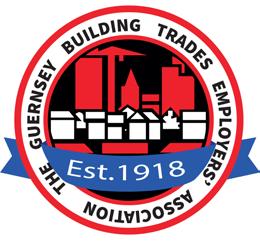
3 minute read
GBTEA
Modern times: from major projects to a pandemic
In our final column in this series looking back at the history of the Guernsey Building Trades Employers’ Association (GBTEA) since its inception in 1918, we consider its achievements in more modern times. Secretary of the GBTEA, Brian Singleton, reflects on the past decade and updates us on the organisation’s present position as it navigates the pandemic.
Advertisement
2012: The States of Guernsey and the GBTEA worked together to promote health and safety in the construction industry with the introduction of the landmark Passport to Safety scheme.
2013: Compared with Jersey and the UK, the island was relatively buoyant. The GBTEA believed our escape from the struggles that beset elsewhere was due in no small measure to the GHA, who made sure its projects were delivered by local contractors.
2014: This year continued in the same vein with several larger developments coming on stream which kept the larger contractors occupied, leaving the smaller builders to concentrate on the home improvement market.
2015: We have always been a strong supporter of vocational training and believe the apprenticeship scheme is the best way to ensure the long-term sustainability of local trades. We were disappointed to see the erosion of some elements of the scheme, and a lack of commitment to vocational training.
2016: A tough year for the industry. The States adopted the new IDP in November, which replaced the old RAP and UAP. Industry discussion centred on a requirement for private developers to contribute to affordable housing by handing over a proportion of plots. However, the IDP also included several provisions which it was hoped would help stimulate construction.
2017: Although tough times had continued for the industry, the first signs of improvement started to emerge. In May, the contract was awarded to build the new Waste Transfer Station, which was the largest States project for some time. The GHA commenced several smaller sites while a couple of significant private housing development sites also began this year.
2018: In the GBTEA’s centenary year, there were signs of slightly better activity for the sector. The Employment & Earnings Bulletin was published showing that employment remained stable with approximately 2,770 in the sector. However, with the Longue Hougue project close to completion, there were concerns that no other major building projects would start within the next year.
2019: Economic activity within the local construction sector improved modestly, with further signs of a pickup in the housing market, but less work from the States of Guernsey. This year also marked the 70th anniversary of the apprenticeship scheme. The GCFE arranged an exhibition at Beau Sejour, and the GBTEA was one of the main sponsors.
2020: The prospect for more work with tenders for two high school extensions was put on hold following the States decision to ‘pause and review’ their one school two site model. But more significant disruption was to come in the form of Covid-19.
On 25 March all but essential construction was halted for five weeks as the island went into lockdown and workers were furloughed. As Guernsey gradually emerged, five people were allowed to work on construction sites. The GBTEA council met on numerous occasions via Zoom, to discuss and liaise with the industry and the States regarding coronavirus regulations and their implementation, which we communicated to our members.
Coronavirus continued to have an effect throughout the year with insulation, aluminium, and timber in short supply. Travel restrictions led to challenges in bringing specialist contractors to the island either as critical workers or to self-isolate. Despite this, the industry survived reasonably unscathed.
2021: Little did we know what was awaiting us in the latter part of January as the second lockdown again affected the entire industry. Now, as the island looks to recover, we will again draw on our experience to offer guidance to our members.








